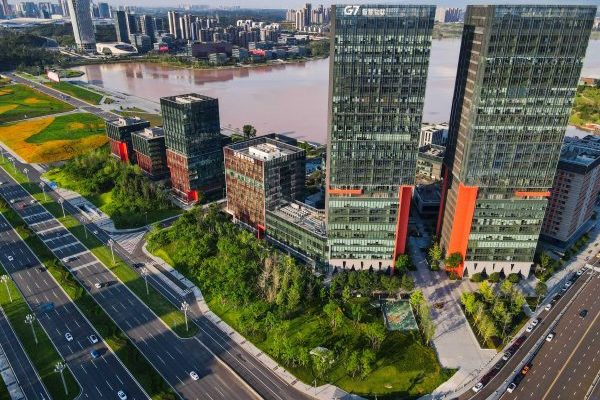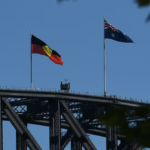Building resilient, sustainable and secure cities for a post-COVID-19 world

Around 55 per cent of the world’s population live in cities and by 2050 this is expected to increase to 68 per cent, with most concentrated in developing countries. Cities also generate more than 80 per cent of global GDP. Yet COVID-19 has made cities seem less attractive. Density and shared services make social distancing challenging. Urban areas are among the hardest hit by COVID-19 and the long-term impact remains unclear.
Cities also account for more than 70 per cent of all carbon emissions. Most cities are vulnerable to at least one type of natural disaster and face climate challenges, such as air pollution and heatwaves, on top of the associated health problems. The risk of floods in coastal cities has also increased due to rising global sea levels.
Cities continue to face numerous security challenges and emerging threats with many having been targets of terrorist attacks. The digitalisation of buildings and infrastructure also blurs the lines between the physical and virtual worlds. Increasing dependency on smart technologies and interconnectivity is likely to increase cities’ vulnerability to cyber-attacks and privacy breaches. Emerging hybrid threats such as bioterrorism also pose a serious risk.
COVID-19 presents cities with an opportunity to apply lessons learned from the disruptions and build resilience against future risks. What might a post-COVID-19 city look like? Ideally, it would be resilient, well-prepared to absorb and recover from stressors. Cities can build resilience by designing plans and protocols to deal with their unique vulnerabilities.
Within local communities, resilience means cohesion and neighbourliness, where people help one another during emergencies. Resilience can also be strengthened through local empowerment, capacity-building and community-driven projects that involve local decision-making and resource management.
Active community engagement and open communication can also increase public trust in government. In Vietnam, one factor contributing to its success in managing COVID-19 is public compliance with government guidelines — made possible by effective and transparent messaging from public officials.
Tourism-dependent economies in the Asia Pacific have been hit hard by COVID-19. Japan’s Go To Travel campaign is an attempt to promote domestic tourism to aid the sector’s recovery. Yet such ideas are less applicable to smaller island economies. Instead, regional cooperation and aid can support the strengthening of social protection programs and encourage the diversification of local industries and workforce reskilling.
Cities are at the frontline of climate change and should be sustainable. Cities need to urgently invest in green infrastructure. Developing more green spaces — such as parks, trails and gardens — can reduce the risk of flooding. Sustainable cities should embrace flexibility in urban design, taking potential disruptions into account.
Infrastructure, buildings and public spaces can be designed for multiple uses or to be repurposed quickly during crises. Chulalongkorn University Centenary Park in Bangkok, for example, is vulnerable to flooding. Yet it serves as a community space when there is sunshine and a water catchment area during the rainy season.
Adopting zero-waste, circular economy frameworks by extracting the maximum value from resources through reuse and recycling is also important. Repurposing and upgrading buildings should be prioritised over demolition, and construction waste should be recycled where possible.
In the developed world, many cities are moving towards clean electrification and smart energy grids to reduce carbon footprints and work towards net-zero emissions. Yet this requires long-term investments that might not be financially viable for developing countries. They should first address basic infrastructure gaps and invest in renewable energy infrastructure, which can also boost job creation and economic growth.
Reimagining urban spaces and mobility can discourage private vehicles in favour of walking and non-motorised transport. There is increasing interest in compact neighbourhoods. Melbourne, for example, is planning ‘20-minute neighbourhoods’, where essential services and cultural activities are always a short walk away.
More remote working may reduce the need for office spaces in favour of larger, greener living spaces. It can also decrease the frequency of commutes and traffic volume. Cities can become more efficient at managing movement using data to predict peak-hour congestion.
Post-COVID-19 cities should also be secure by design. In developing counter-terrorism measures, cities need to strike the right balance between security and liveability. There is potential for collaborative efforts between urban planners, crisis specialists and security experts.
For example, to protect pedestrian areas from vehicle-ramming attacks, some cities adopted creative solutions such as installing art sculptures, raised planters and trees, water features, and benches to create aesthetic obstacles rather than barricading streets with unsightly metal barriers or concrete blocks.
Smart cities must prioritise investments in cyber security infrastructure. It is cheaper to embed security into initial designs, rather than try to fix existing systems later. Growing scepticism of technology-dependent urban planning should also be addressed. Countries should put liveability at the forefront of urban policy. Technological advancements, such as in robotics and artificial intelligence, may displace large numbers of workers.
Urban inequality, unemployment and the rise of extremism fuelled by online disinformation and social isolation during lockdowns, could create conditions for future social unrest. Psychological resilience of urban dwellers remains important, and psychological defence should be promoted and strengthened.
Resilience, sustainability and security by design, without compromising liveability, are central themes that can enhance cities’ preparedness to deal with the challenges of the 21st century. Still, cities around the world face unique challenges, including diverse population sizes and varying geographical and economic conditions.
While there is a lot to learn from one another, policymakers and urban planners must consider local nuances as they reimagine post-COVID-19 cities.
This article was published by the East Asia Forum.
Tan Ming Hui is Associate Research Fellow in the Policy Studies Group at Nanyang Technological University in Singapore. Her research interests include Japan’s foreign policy and the international relations of Northeast Asia.















